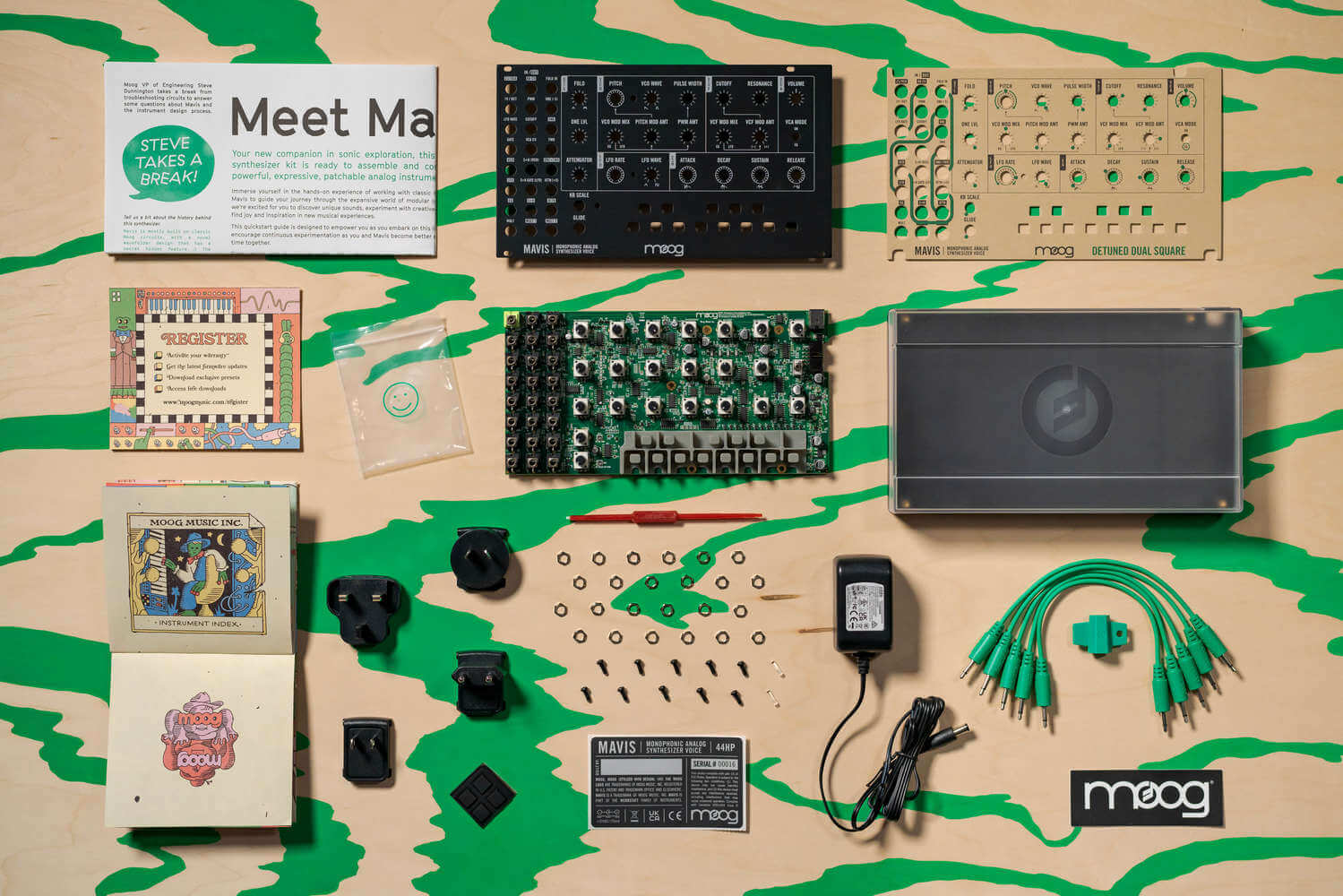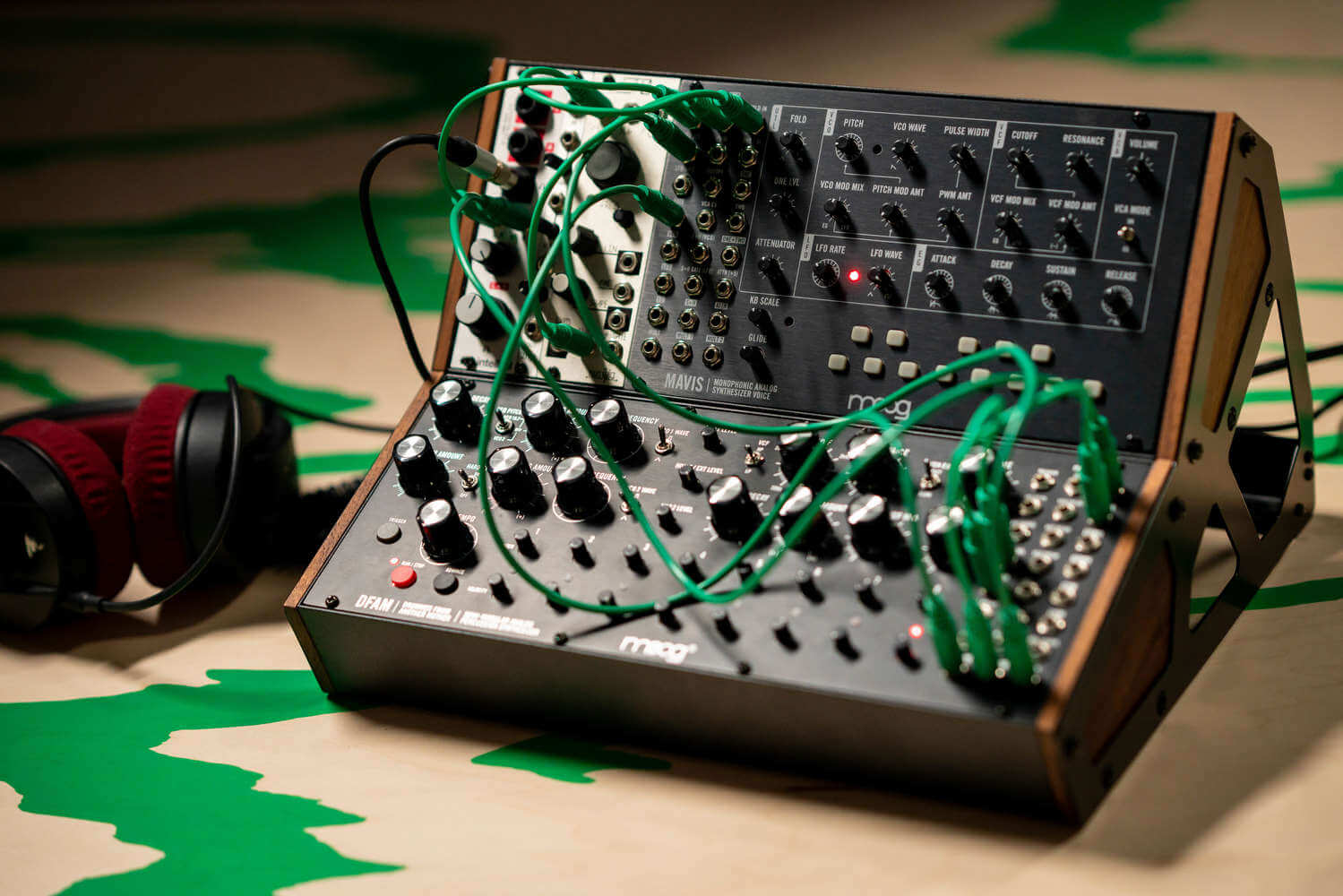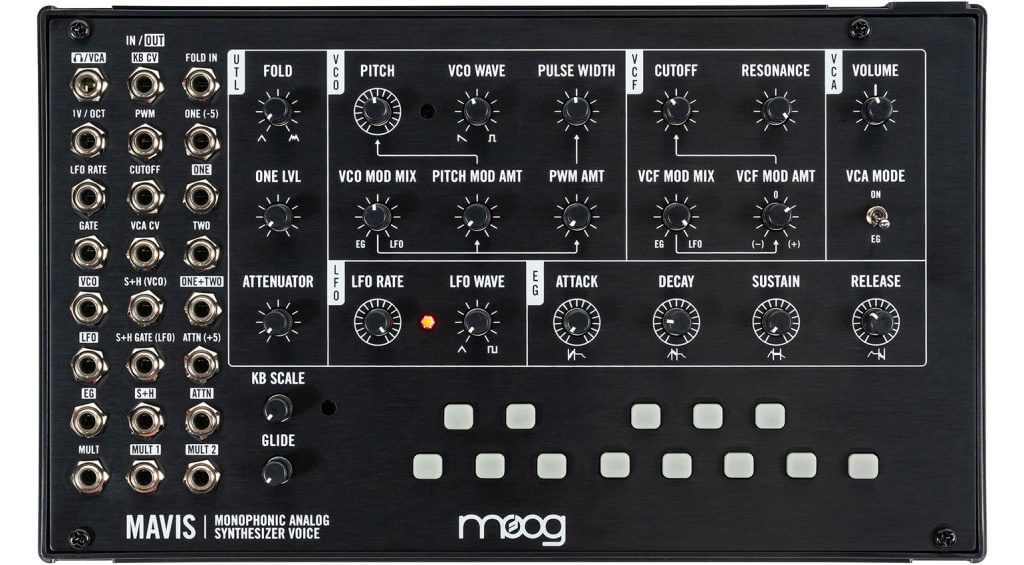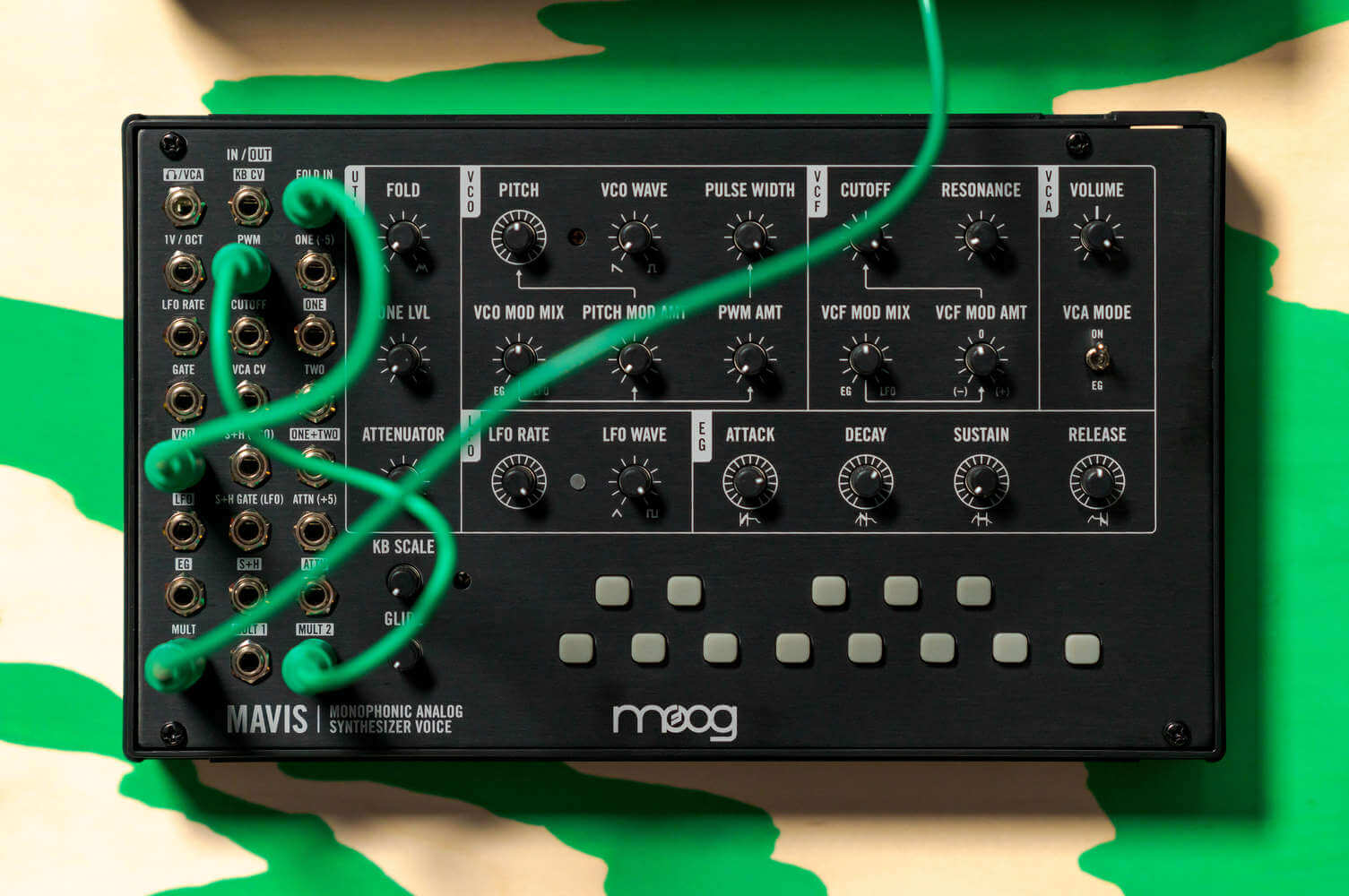Moog Mavis: budget-friendly analog semi-modular synthesizer
Image Credit: Moog
Moog launches Mavis: a small yet mighty budget-friendly semi-modular synthesizer with authentic analog circuitry.
The Moog Mavis is a low-cost semi-modular analog synthesizer. Despite its affordability, it has the classic Moog sound, feel, and quality. Further, you can use it standalone or integrate it into your Eurorack (44HP). It has a true analog circuitry with 24 patch points, a built-in keyboard, and an all-analog sound engine with Moog’s new wavefolding circuit.
Moog Mavis: an affordable build-it-yourself semi-modular synthesizer
Mavis is a small DIY synthesizer that you assemble yourself. What sets the Mavis apart from other Moog DIY synths like the Werkstatt-01 is that this synthesizer utilizes synth techniques other Moog synths haven’t.
But before we jump into those technicalities, let’s talk about the DIY aspect.

With no soldering required, you must place its circuit board into its plastic enclosure, mount the face plate, and screw on the 24 patch connectors. And that’s it!
Furthermore, the four patch cables come bundled with the Mavis in addition to some preset boards. As a result, getting started should be as easy as ABC.
As we mentioned earlier, Mavis will fit nicely into your Eurorack with its size of 44 HP. And in addition to patch cables, bundled is a single octave 13-key mini keyboard for playing notes and interacting with your sound. And 22 specified parameter controls allow you to twist and play with the sound possibilities in front of you.

Moog’s wavefolding circuit and synth parameters
Sitting just to the right of the patch pays is an all-new sound engine. The new wavefolder circuit shapes and can fold incoming waves, putting this synth in a lane of its own. In short, the wavefolder allows you to make brand new waveforms rather than being stuck with the classic saw and square wave.

And next to the wavefolder sits the VCO (oscillator) section. Controls for pitch and VCO wave shape sit here, and you can continuously adjust between saw and square oscillator waves. Other controls here include pulse width, VCO Mix, pitch mod amount, and PWM (pulse width modulation) Amount.
Moving further right, the filter controls include cutoff, resonance, VCF (filter) Mod Mix, and VCO Mod Amount.
On the far right sits the output volume control and a switch for the VCA (amplifier) Mode.
In the modulation section, the LFO uses adjustable-rate and LFO-Wave parameters to manipulate the modulation. And to the right of the LFO sits the envelope generator.
Connectivity
Despite all of these pros, one issue that some users may pick out is the lack of modern connectivity. Although the synth utilizes true analog circuit at an affordable price point, there are no digital connection options for MIDI or integrating the device into your DAW.
These don’t necessarily need to be issues though. If you want a bigger set of keys to play your sound with then you’ll need a keyboard capable of outputting control voltage. As for DAW integration, a mini-jack to 1/4″ adapter should allow you to plug your Moog Mavis into your audio interface. but that’s all additional hardware.
Price and availability
The Moog Mavis is available now for $415/399 Euro/£343.
